Filter by

The Hunt for FOXP5: A Genomic Mystery Novel
Genetics professor Michelle Murphy loses her husband under mysterious circumstances and without warning, while their brilliant eight year old daughter Avalon, adopted in Kazakhstan, stubbornly believes she is a mutant. As if this were not enough she soon finds herself thrown into the middle of a quickly thickening plot, where the legacy of Genghis Khan meets the hunt for FOXP5, a genetic t…
- Edition
- -
- ISBN/ISSN
- 978-3319289601
- Collation
- 258 pages
- Series Title
- -
- Call Number
- -
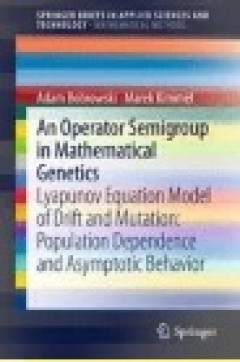
An Operator Semigroup in Mathematical Genetics
This authored monograph presents a mathematical description of the time evolution of neutral genomic regions in terms of the differential Lyapunov equation. The qualitative behavior of its solutions, with respect to different mutation models and demographic patterns, can be characterized using operator semi group theory. Mutation and drift are two of the main genetic forces, which act on gen…
- Edition
- Ed. 1
- ISBN/ISSN
- 978-3-642-35958-3
- Collation
- VI, 88
- Series Title
- SpringerBriefs in Applied Sciences and Technology
- Call Number
- 575.1 BOB o

The Giant Liver Fluke, Fascioloides magna: Past, Present and Future Research
This monograph presents complex data on Fascioloides magna from all aspects of its research (general information, distribution, spectrum of hosts) and summarizes the latest information on molecular structure of informative genes which were recently applied in resolving taxonomy and biogeography of this veterinary important parasite. The giant liver fluke, Fascioloides magna, is important liver …
- Edition
- -
- ISBN/ISSN
- 978-3-319-29508-4
- Collation
- XII, 106
- Series Title
- SpringerBriefs in Animal Sciences
- Call Number
- -

Life Extension: Lessons from Drosophila
This book looks at aging through research on Drosophila, the fruit fly that is one of the most widely used model organisms in bio gerontology. Work in model organisms can expand the theoretical knowledge of aging: it yields valuable insight into the molecular and cellular processes that underlie aging process, and it can perhaps provide new therapeutic targets for the treatment of age-related d…
- Edition
- -
- ISBN/ISSN
- 978-3-319-18326-8
- Collation
- -
- Series Title
- -
- Call Number
- -
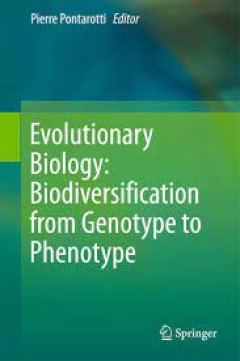
Evolutionary Biology: Biodiversification from Genotype to Phenotype
This book presents 20 selected contributions to the 18th Evolutionary Biology Meeting, which took place in September 2014 in Marseille. They are grouped under the following major themes: · Genotype to Phenotype · Genetic Mechanisms of Diversification · Evolutionary Mechanisms · Speciation and Biodiversity The aims of these annual meetings in Marseille …
- Edition
- -
- ISBN/ISSN
- 978-3-319-19932-0
- Collation
- 28 b/w illustrations, 40 illustrations in colour
- Series Title
- -
- Call Number
- -
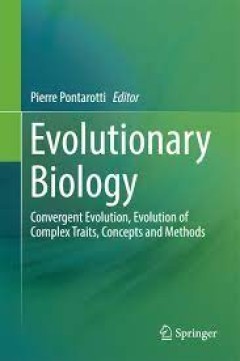
Evolutionary Biology Convergent Evolution, Evolution of Complex Traits, Conc…
This book presents selected contributions to the 19th Evolutionary Biology Meeting, which took place in September 2015 in Marseille. It consists of 22 chapters, which are grouped in four sections: · Convergent Evolution · Evolution of Complex Traits · Concepts · Methods The annual Evolutionary Biology Meetings in Marseille serve to gather leading evolu…
- Edition
- -
- ISBN/ISSN
- 978-3-319-41324-2
- Collation
- 14 b/w illustrations, 36 illustrations in colour
- Series Title
- -
- Call Number
- -
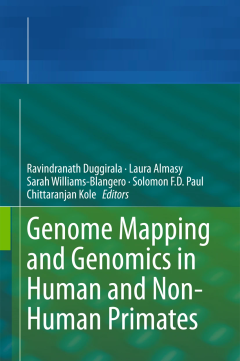
Genome Mapping and Genomics in Human and Non-Human Primates
This book provides an introduction to the latest gene mapping techniques and their applications in biomedical research and evolutionary biology. It especially highlights the advances made in large-scale genomic sequencing. Results of studies that illustrate how the new approaches have improved our understanding of the genetic basis of complex phenotypes including multifactorial diseases (e.g., …
- Edition
- -
- ISBN/ISSN
- 978-3-662-46305-5
- Collation
- VIII, 305
- Series Title
- -
- Call Number
- 575 GEN

Genetics, Evolution and Radiation
This book is dedicated to the great scientist and outstanding individual Nikolay Wladimirovich Timofeeff-Ressovsky. The book brings together a number of brief stories/essays about Timofeeff-Ressovsky including “Stories told by himself”, and scientific chapters addressing his major research areas: genetics, radiobiology, radiation ecology and epidemiology, and evolution. Timofeeff-Ressovsky …
- Edition
- -
- ISBN/ISSN
- 978-3-319-48837-0
- Collation
- XX, 558
- Series Title
- -
- Call Number
- 363.92 GEN
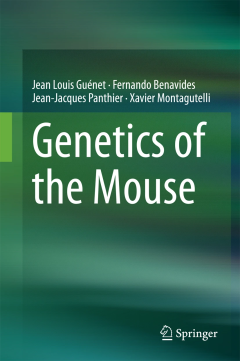
Genetics of the Mouse
This book, written by experienced geneticists, covers topics ranging from the natural history of the mouse species, its handling and reproduction in the laboratory, and its classical genetics and cytogenetics, to modern issues including the analysis of the transcriptome, the parental imprinting and X-chromosome inactivation. The strategies for creating all sorts of mutations, either by genetic …
- Edition
- -
- ISBN/ISSN
- 978-3-662-44286-9
- Collation
- XVII, 408
- Series Title
- -
- Call Number
- 363.92 GUE g

Encyclopedia of Metagenomics Genes, Genomes and Metagenomes. Basics, Methods…
Metagenomics has taken off as one of the major cutting-edge fields of research. The field has broad implications for human health and disease, animal production and environmental health. Metagenomics has opened up a wealth of data, tools, technologies and applications that allow us to access the majority of organisms that we still cannot access in pure culture (an estimated 99% of microbial lif…
- Edition
- -
- ISBN/ISSN
- 978-1-4899-7478-5
- Collation
- 39 b/w illustrations, 178 illustrations in colour
- Series Title
- -
- Call Number
- -
 Computer Science, Information & General Works
Computer Science, Information & General Works  Philosophy & Psychology
Philosophy & Psychology  Religion
Religion  Social Sciences
Social Sciences  Language
Language  Pure Science
Pure Science  Applied Sciences
Applied Sciences  Art & Recreation
Art & Recreation  Literature
Literature  History & Geography
History & Geography